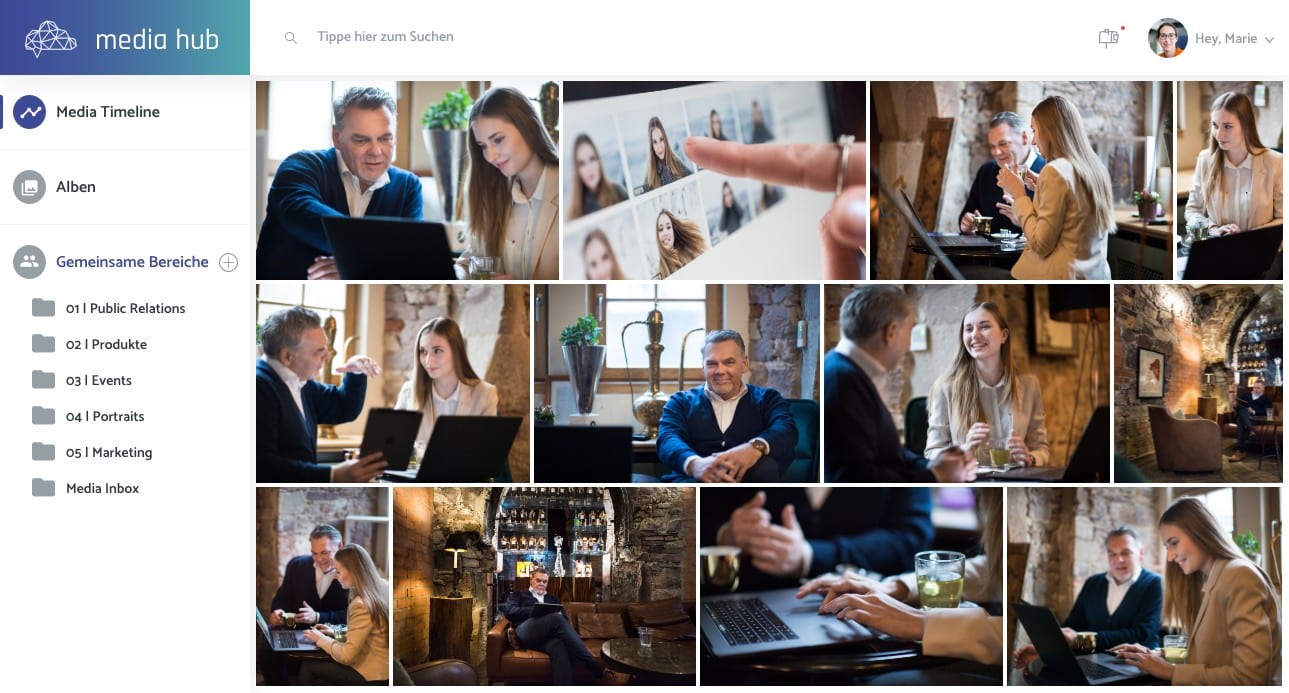Unlike a simple cloud storage or file sharing service, professional image management software can be used to enrich digital marketing assets from your media pool with relevant additional information and metadata. These are, for example, image descriptions (captions), keywords (tags), license information, copyright notices, references to consent declarations or campaign information.
As a result, a company’s digital assets can be located more quickly and are available for immediate use by all employees with permission access for image management, regardless of location. Needless to say that this increases your team’s productivity. Your digital content production processes accelerate. And ultimately your media reach increases.
In many companies, digital assets are not only generated and used within the marketing department, but often also within corporate communications, event organization, or product and industrial design.
In a professional media management system, all types of digital assets can be managed and organized together. This also includes special file formats such as vector graphics, multimedia presentations or RAW formats.

 https://www.teamnext.de/wp-content/uploads/2022/04/jpg_unsplash-scaled.jpg
833
2560
Björn Buxbaum-Conradi
https://www.teamnext.de/wp-content/uploads/2022/03/teamnext-mediahub-logo-bunt.svg
Björn Buxbaum-Conradi2022-04-04 14:36:182024-08-15 13:48:38What you need to know about the JPEG format
https://www.teamnext.de/wp-content/uploads/2022/04/jpg_unsplash-scaled.jpg
833
2560
Björn Buxbaum-Conradi
https://www.teamnext.de/wp-content/uploads/2022/03/teamnext-mediahub-logo-bunt.svg
Björn Buxbaum-Conradi2022-04-04 14:36:182024-08-15 13:48:38What you need to know about the JPEG format





